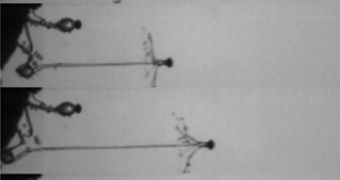A recent discovery showed that fungal species registered speeds of 88 km/h (55 miles per hour), exhibiting accelerations 180.000 times Earth's gravity as they project their spores outwards.
The common pathogens of the crops are mostly harmless to humans, but some can still increase the negative effects of asthma or allergies or even affect lungs, like the black mold, which prospers in damp places, such as house basements.
According to the general belief, spores were helped to get in the air by even the faintest of currents. In the light of the latest research, though, it seems that fungi use complicated mechanisms in order to spread their spores into farther places. The super-high speed video technology helped scientists watch as some fungal species use their natural water pressure in order to eject their tiny seeds, like squirt pistols. Nicholas Money, fungus biologist at Miami University (M.U.) in Oxford, Ohio and leader of the research says that "The beauty of the mechanism was a great surprise. We were totally gobsmacked by these images."
The small fungi grow in the droppings of herbivore animals, such as cows, which provide a fundamental ecological aid by decomposing the natural dejections and transforming them into nutrients for the soil. But since the animals won't eat near feces, the little fungi are forced to "shoot" their spores 2.5 m (8 feet) away, in order to increase the likelihood that they get eaten. This is the way they spread – through the ingested and re-eliminated manure. It's kind of a weird interpretation of that saying, "Love goes through the stomach."
Since they are so minuscule, air is a tough barrier as it exerts an enormous amount of drag, which is why a huge acceleration is required. Money explains: "In terms of velocity, there are other things that move faster. It's the acceleration here that's really astonishing. These microscopic spores are stationary, and one millionth of a second later, they are moving at 25 meters per second (56 miles per hour)." Stretching proportions, this would allow a human to sprint with 5.000 times the speed of sound. This discovery could prove helpful at some point in controlling the harmful fungi.

 14 DAY TRIAL //
14 DAY TRIAL //